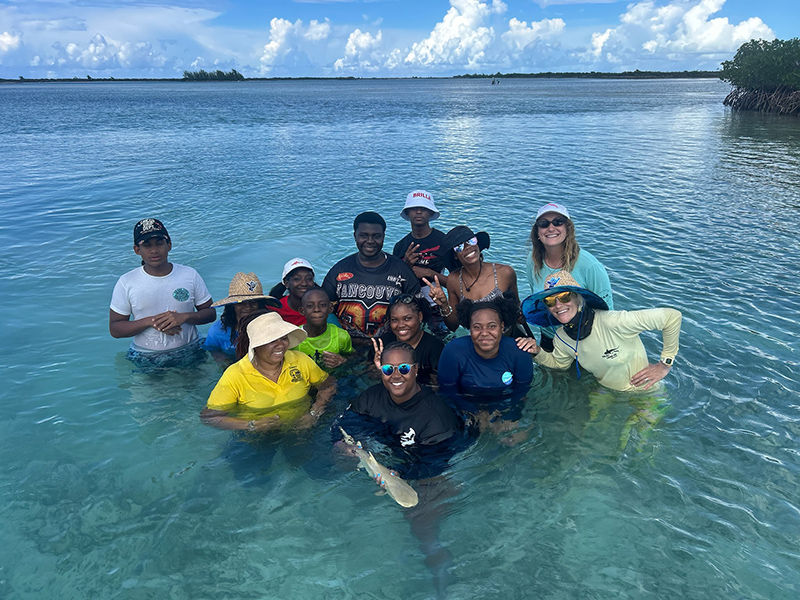Exploring Habitat Utilization of Smooth Dogfish: A Hands-On Experience for Future Marine Scientists
- Sharks4Kids

- Oct 5, 2024
- 2 min read
Author Marissa DeBonis
As a professor in the Marine Science Department at Stony Brook University, I always seek ways to immerse my students in real-world research that deepens their understanding of coastal ecosystems. This past June, I had the pleasure of working with my students from the Coastal Ecology Field Methods course on a collaborative project with Dr. Brad Peterson’s Community Ecology Lab. We focused on smooth dogfish (Mustelus canis), an important yet often overlooked species in our coastal waters.
Our team joined Ph.D. student Brittney Scannell and embarked on an exciting field expedition with a clear objective: to gather critical data on the habitat utilization of smooth dogfish along the south shore of Long Island. This research is vital to understanding how these sharks interact with their environment, especially concerning man-made structures like artificial reefs—an area Brittney extensively studies for her dissertation.

The student takes a small fin clip sample from the pelvic fin of the shark to analyze genetics
The day began with a short boat ride as our group headed to the local fishing grounds in Shinnecock Bay, a newly designated Hope Spot. Under the guidance of Brittney and me, my students participated in every step of the process, from capturing the smooth dogfish to taking detailed measurements and biological samples. Each shark was carefully handled to minimize stress before being equipped with acoustic tags and quickly released after the tag was secured.
These tags are central to the study, allowing us to track the movements of the smooth dogfish as they navigate the waters of Long Island. The area is lined with an array of receivers, which record the presence of tagged sharks as they move past. This technology provides invaluable data on where these sharks spend their time, mainly whether they utilize artificial reefs and other man-made structures.

Marissa and the students work together to acquire length measurements
The Peterson Lab’s ongoing research has demonstrated that these artificial reefs are more than mere attractors of marine life—they actively contribute to "secondary production." Fish like black sea bass, which return to these reefs year after year, aren’t just visiting; they are growing in size thanks to the resources provided by the reef. This finding is crucial for commercial and recreational fishing, as it underscores the role of artificial reefs in sustaining and enhancing local fish populations. For larger predatory species, such as sharks, these reefs serve as convenient feeding grounds, offering an abundant supply of prey.

Marissa demonstrates how to take a blood sample from the underside of the smooth dogfish
For my students, this project was more than just a class assignment; it was an inspiring opportunity to contribute to ongoing research that could influence conservation strategies for these coastal mesopredators. The experience also highlighted the crucial role of hands-on learning in the field of marine science, reinforcing concepts they had learned in the classroom while providing them with practical skills they will carry into their future careers. Engaging young minds with real-world science is at the heart of our Sharks4Kids mission, and I believe that projects like this one are crucial to inspiring the next generation of marine scientists and conservationists.





















